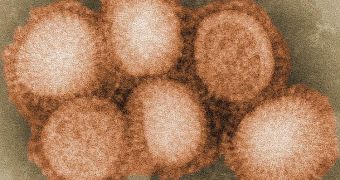In a paper published in the latest issue of the esteemed journal Nature Biotechnology, investigators with an international team say they have been able to create genes that can be used as antivirals. The material has the ability to disrupt some of the key functions of the flu virus, potentially preventing epidemics.
Gene therapies have been considered as potential ways to fight off numerous diseases for quite some time, but they are very difficult to set up properly. The reasons why they have not yet entered mainstream use is that genes tend to affect the expressions of more than one protein.
Therefore, the potential of triggering a large number of unwanted effects in the human body is quite large. Before they can start using a gene therapy, researchers need to understand the full range of effects the therapeutic approach will have, and that takes time.
The new method of using manufactured genes for combating the influenza virus was developed by researchers working under the supervision of Michigan State University assistant professor of chemical engineering and materials science, Tim Whitehead.
“Our most potent design has proven effective on the vulnerable sites on many pandemic influenza viruses, including several H1N1 (Spanish flu, Swine flu) and H5N1 (Avian flu) subtypes,” he says.
“These new therapeutics are urgently needed, so we were especially pleased to see that it neutralizes H1N1 viruses with potency,” adds the expert, who was also the co-lead author of the new research.
By using a process called DNA deep sequencing and computer-aided design, researchers have been able to create designer proteins that can target very specific, highly vulnerable sites on the flu virus, one of the most adaptable microorganisms known to man.
In addition to opening up a new avenue of research in treating multiple strains of flu, the team has also set the stage for new investigations into combating other conditions, included smallpox, e! Science News reports.
The new research was sponsored by the US Defense Research Projects Agency (DARPA), the Defense Threat Reduction Agency, the National Institutes of Health (NIH), the National Institute of Allergy and Infectious Diseases and the National Institute of General Medical Sciences.
“By taking only the best mutations, we can reprogram our proteins to burrow into viruses at key locations and render them harmless. Our work demonstrates a new approach to construct therapeutic proteins, which we hope will spur development of new protein drugs by the biopharmaceutical industry,” Whitehead concludes.

 14 DAY TRIAL //
14 DAY TRIAL //